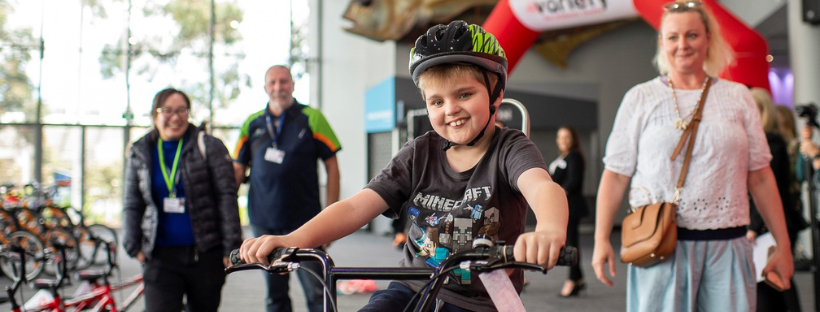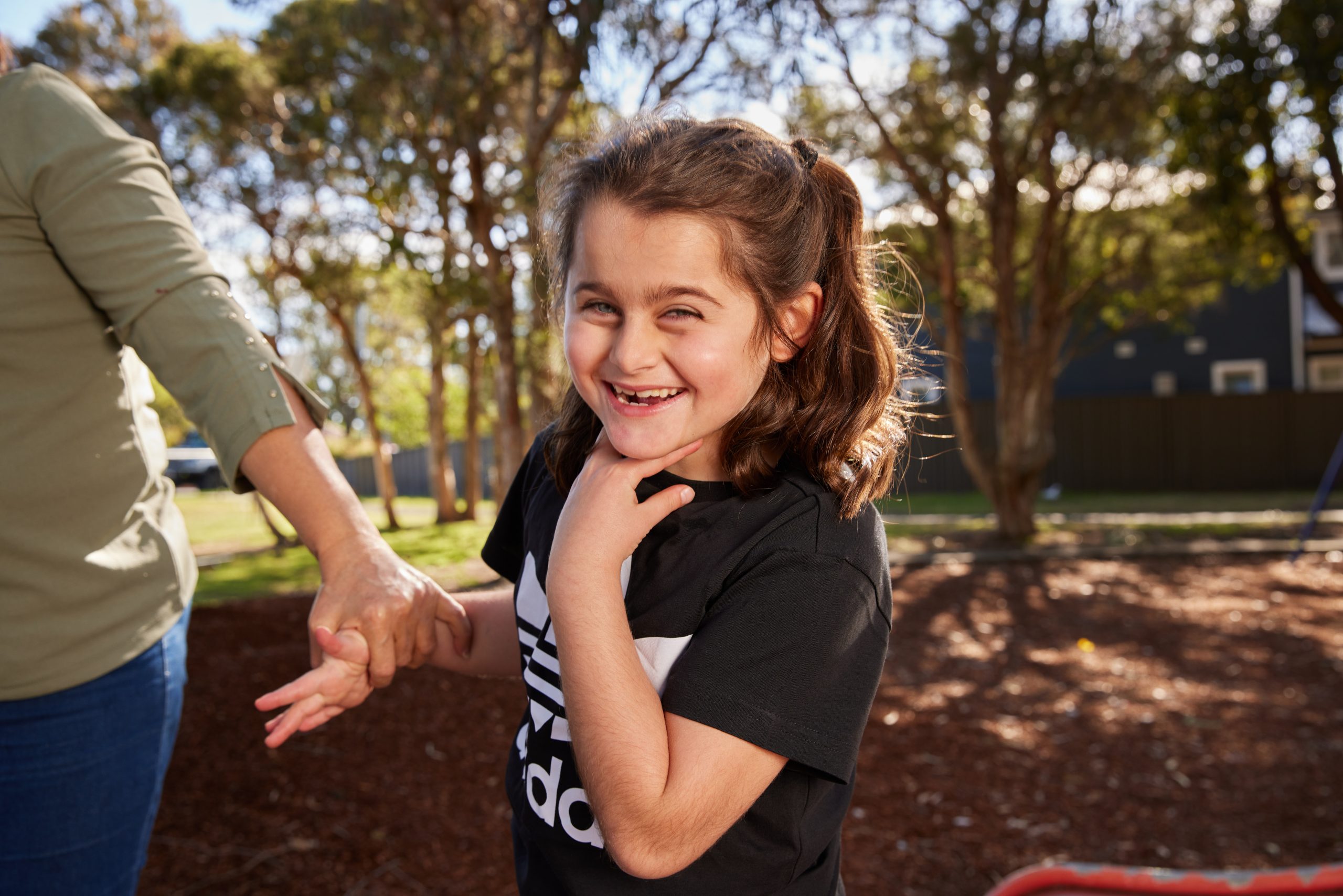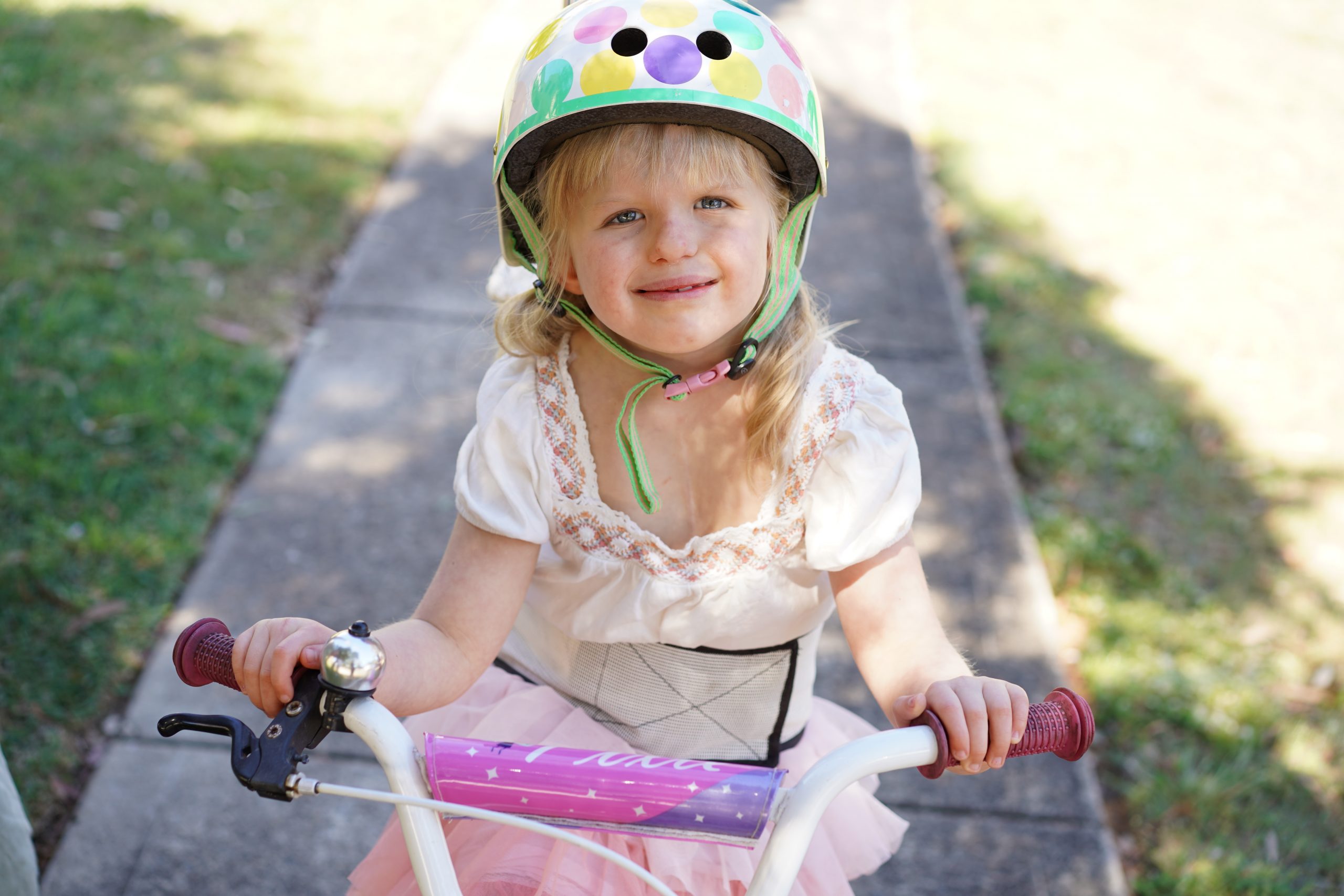What are the benefits of riding a bike for people living with disability?
Learning to ride a bike is a common childhood milestone and is a lifelong recreational activity for many people (Toovey, Reid, Rawicki, Harvey, & Watt, 2016; MacDonald et al., 2012). Bike riding provides a form of physical activity and encourages social interaction with peers, community and family members (Ulrich, Burghardt, Lloyd, Tiernan, & Hornyak, 2011). Children with disabilities face many challenges, consequently decreasing their opportunities to participate in leisure activities, such as bike riding (Kaljača, Dučić, & Cvijetić, 2019).
Bike riding has a variety of beneficial health outcomes in the physical, social-emotional and cognitive domains for children with disabilities (Mishin, Hunt, Decker, Coley, & Nelson, 2015). Such proven benefits include long-term positive effects in improving mobility and overall physical and mental health, development of self-confidence and social identity, community participation and independence (Schwabe, 2019; Kaljača et al., 2019). Adapted bikes can be a stepping stone to overcoming these challenges and increasing opportunities for physical health and participation in social activities.

Physical Benefits
Bike riding improves cardiorespiratory function and encourages participation in physical activities
• Research has demonstrated that participating in bike riding contributes to improved cardiorespiratory function and healthy weight maintenance in children with developmental disabilities such as Down Syndrome (DS) and Autism Spectrum Disorder (ASD) (Hauck et al., 2017; Armstrong et al., 2019a).
• Bike riding is a form of aerobic exercise, promoting increases in aerobic capacity andcardiorespiratory fitness (Fowler et al., 2010).
• Bike riding encourages decreased time spent in sedentary activities and increases physical activity participation (Armstrong et al., 2019b).
Bike riding improves gross motor function
• Evidence highlights that functional motor ability can be significantly improved through bike riding (Tsigkanos, Chrysadis, Nikopoulos, & Koutsouki, 2013).
• Improvements can be gained in balance, agility and overall gross motor function through the repetitive and continuous action of pedalling (Armstrong et al., 2019a; Fowler et al., 2010).
• These improvements can also be generalised to increased functional independence in other areas that require balance and coordination (Armstrong et al., 2019b).
Bike riding improves lower limb strength
• It has been proven that participating in bike riding greatly increases lower limb strength through the repetitive pedalling action (Bryant, Pountney, Williams, & Edelman, 2012; Fowler et al., 2010; Armstrong et al., 2019a).
• To encourage progression and continue to increase leg strength, resistance features can be added to the bikes (Fowler et al., 2010; Armstrong et al., 2019a).
Examples in Specific Conditions
• One study found that children with DS and ASD were successful in riding a bike independently when the appropriate supports including adaptations and instructions were implemented (MacDonald et al., 2012).
• A case-controlled study highlighted that in children with Cerebral Palsy (CP), bike riding can improve the health and participation in physical activities (Toovey et al., 2016).
• Bike riding is a symmetrical activity encouraging positive changes in balance ability in children with hemiplegic CP (Pickering, Horrocks, Visser, & Todd, 2013).
• In children with CP, improvements in lower limb strength were found without increasing spasticity (Bryant et al., 2012; Tsigkanos et al., 2013).

Social-emotional Benefits
Bike riding encourages independence
• Research has demonstrated that participating in a social activity such as bike riding, can help children develop skills in independence, reducing their reliance on others (MacDonald, Jaszewski, Esposito, & Ulrich, 2011; Fernandes, 2006).
• This has been further supported by parents of the children, expressing the importance bike riding has on developing these independent skills (MacDonald et al., 2011).
Bike riding improves emotional wellbeing
• Research shows confidence and self-esteem can improve through learning to ride a bike (MacDonald et al., 2011). It has also been demonstrated that this confidence can help increase motivation to try other physical activities (Halayko, Magill-Evans, Smith, & Polatajko, 2016).
• Evidence has noted children can become excited and feel a sense of pride in being able to show their family and peers their newly developed skill of riding a bike, which in turn improves their confidence and self-esteem (MacDonald et al., 2011).
• Research has also shown that the ability to ride a bike can help a child regulate their emotions (MacDonald et al., 2011). Bike riding can be used as a coping strategy or outlet to help children increase their concentration and focus on academic requirements (MacDonald et al., 2011). For example, a child who is overwhelmed or has trouble concentrating on their academic tasks can ride their bike for 10-15 minutes to destress, refocusing their attention back to their academic tasks when returning (MacDonald et al., 2011).
Bike riding provides a means of interaction and participation with family, peers and community members
• Bike riding increases the opportunities for children to socialise with peers, family and the wider community through participating in a common activity (Pickering et al., 2013; Ulrich et al., 2011; MacDonald et al., 2011). This will promote inclusion and build positive peer relationships (MacDonald et al., 2011; Halayko, et al., 2016).
• Evidence supports bike riding as a catalyst for developing and practice social skills with peers (MacDonald et al., 2011). As a result, children’s communication skills may be enhanced through talking with peers about a common enjoyable activity, leading to decreased social isolation (MacDonald et al., 2011). Research shows that these skills can be transferred into different social environments, further promoting inclusion (MacDonald et al., 2011).
Examples in Specific Conditions
• In children with CP, it has been proven that bike riding improves the social and emotional wellbeing (Demuth, Knutson, & Fowler, 2012; Armstrong et al., 2019a). Additionally, it has been demonstrated that the use of adapted bicycles increase the social participation in children with CP (Armstrong et al., 2019a).
• Bike riding encourages independence and a sense of freedom in children with CP and Muscular Dystrophy by allowing them to participate in an activity where they can autonomously initiate mobility around their community (Fernandes, 2006).
• Research has shown that in children with ASD, participating in bike riding and similar activities can assist in the development of age appropriate social skills (MacDonald et al., 2011).

Cognitive Benefits
Bike riding improves executive functioning
• Bike riding utilises and develops higher functioning skills such as planning, sequencing, monitoring, decisionmaking (Holzapfel et al., 2015; 2). The repetitive motor action of bike riding improves cortical functioning, encouraging the development of these skills (Holzapfel et al., 2015; Mishin et al., 2015)
• Research also shows that cognitive changes in the areas of manual dexterity and cognitive planning are improved through participation in bike riding, as this stimulates the sensory systems (Holzapfel et al., 2015).
• One study found that by participating in bike riding, a lower limb focused exercise, upper limb movement including grasp force and coordination were improved, demonstrating cortical level improvements occur as a result (Ringenbach, Albert, Chen, & Alberts, 2014)
Bike riding improves a child’s safety awareness
• Evidence has demonstrated that participating in bike riding can increase capacity building, resulting in improved road safety and danger awareness (Pickering et al., 2013).
• Additionally, it has also been found that improvements in reaction time occur as a result of bike riding, enhancing children’s ability to ride safely (Vogt, Schneider, Anneken, & Struder, 2013).
Examples in Specific Conditions
• Research shows that for children with DS, participating in bike riding slows the reduction in cognitive decline, maintaining reaction times and executive functioning, as those with DS have a higher risk of developing Alzheimer’s Disease (Ringenbach et al., 2016; Ringenbach et al., 2014)
• In children with DS, evidence has shown that bike riding can result in improved short term memory and reaction time (Holzapfel et al., 2015).
• Decision-making abilities have been proven to increase as a result of bike riding in children with intellectual and developmental disabilities, leading to improved safety awareness (Vogt et al., 2013).
• Physical activities such as bike riding have been found to positively affect children with DS and intellectual disabilities capacity to alternate attention between tasks or cope with environmental changes (task-shifting ability) (Ringenbach et al., 2016).
